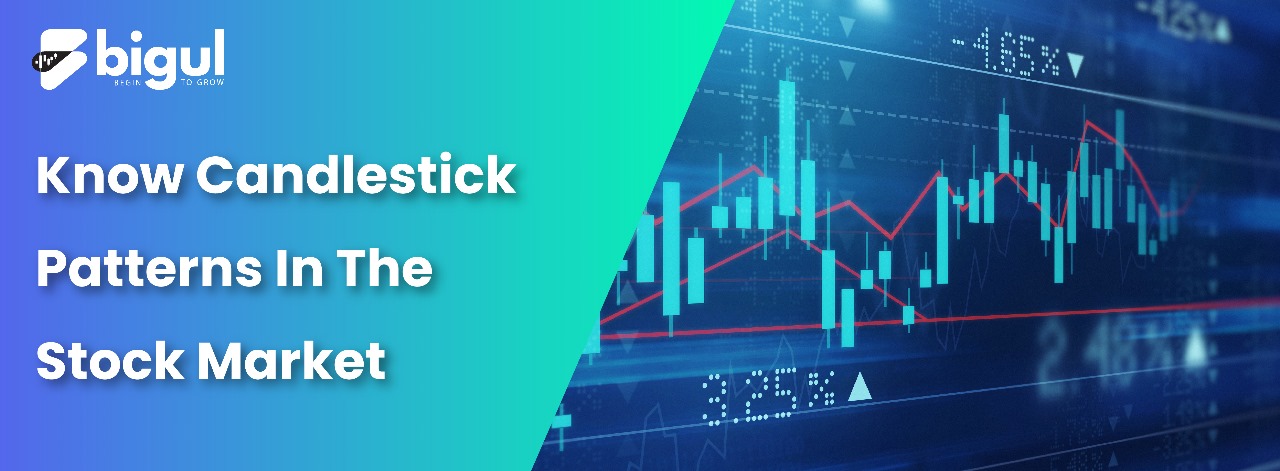Have you ever marvelled at the dazzling dance of numbers and charts on a stock market screen? Among the various graphs, one type of chart that traders swear by is the candlestick chart.
But what makes it so special? It’s all about those intricate candlestick patterns! Dive in, and let’s decode these enigmatic formations together.
Understanding Candlestick Patterns: The Key to Stock Market Insights
Candlestick patterns are visual representations of market movements, offering traders a window into potential future price movements. When you grasp the essence of trading candlestick patterns, you unlock a treasure trove of insights that can give you an edge.
How do Bullish and Bearish Candlesticks Shape Market Trends?
The two primary moods of the market are bullish (optimistic) and bearish (pessimistic). Recognizing bullish candlestick patterns means the market might be gearing up for an uptrend.
On the other hand, spotting bearish candlestick patterns can signal a possible downtrend. Understanding these helps traders anticipate and react to market shifts.
Single vs Complex Patterns
While single candlestick patterns provide insights, often, it’s the combinations or complex patterns that give deeper information.
These patterns can range from a two-candle formation to multiple candles painting a bigger picture. The more you familiarize yourself with these, the more adept you become at predicting the market’s next move.
What are Continuation and Reversal Patterns in Candlestick Analysis?
Dig into the world of candlestick charts, and you’ll come across two vital terms: continuation patterns and reversal patterns. Continuation patterns indicate that the stock will likely keep moving in the same direction, while reversal patterns signal a potential shift.
For instance, if you notice certain candlestick chart patterns while the market is surging, they could indicate that the bullish run is set to continue.
Why India’s Market is a Great Canvas
Considering India’s dynamic stock market, recognizing the best candlestick patterns can be particularly rewarding. Take, for example, the bustling Nifty or Sensex.
Spotting timely stock market candle patterns on these indices can mean the difference between a profitable trade and a missed opportunity.
9 Common Candlestick Patterns
There are numerous candlestick patterns used by traders, each with its unique implications:
- Bearish Engulfing Pattern: When you see a long white candlestick completely covering a smaller black one, you’re looking at the opposite of a bearish engulfing pattern. This means buyers have taken the reins, setting the stage for a possible price increase.
- Bullish Engulfing Pattern: The opposite of the bearish engulfing pattern occurs when buyers outpace sellers. This is reflected in the chart by a long white natural body engulfing a small black real body, suggesting that bulls have established some control and the price could rise.
- Bearish Evening Star: The evening star signifies a shift in momentum. The final candlestick in this pattern opens beneath the small body of the preceding day. This pattern reveals a waning of buyer interest, followed by sellers taking the reins. This might hint at further selling ahead.
- Bearish Harami: A bearish harami is a small black or red natural body entirely inside the previous day’s white or green natural body. This pattern shows indecision on the part of the buyers. Should the price climb further after this pattern, it’s a good sign for those betting on continued growth. However, if a down candle appears next, it could be a warning of a decline to come.
- Bullish Harami: The bullish harami stands in contrast to its bearish counterpart. During a downtrend, a small body (in shades of green or white) appears within the large body (coloured red or black) of the day before. This signals to analysts that the trend might be taking a breather. A subsequent rise in the next session might indicate further upward movement.
- Bearish Harami Cross: In a rising market, watch out for a pattern featuring an upward-moving candlestick, followed by a ‘doji’—a candlestick where the opening and closing prices are almost the same. This doji remains enclosed by the previous session’s body. Its significance aligns with that of the bearish harami.
- Bullish Harami Cross: Amid a downtrend, this pattern appears when a doji follows a downward candlestick. The doji is encased within the body of the preceding session. Its meaning is consistent with that of the bullish harami.
- Bullish Rising Three: Initiating with a pronounced “white day,” the subsequent three trading days see minor bodies that nudge the price downward. However, they remain confined to the range of the initial white day. On the fifth day, another prominent white day emerges. Despite a three-day decline, no new lows are registered, signalling that bullish traders might be gearing up for a surge.
- Bearish Falling Three: Beginning with a substantial downward day, the next three days feature minor bodies trending upward, yet they stay within the bounds of the initial day’s range. The pattern concludes with a pronounced decline on the fifth day, indicating that the sellers have regained dominance and suggesting potential further declines.
Conclusion
A trader’s toolkit should include candlestick patterns since they can reveal market mood and indicate future price reversals. They shouldn’t, however, be utilized alone. Pair these patterns with additional technical analysis tools, and you can sharpen your market predictions.
Whether you’re just starting out or looking to refine your strategy, understanding candle chart patterns is crucial. With every candle telling a story of its own, mastering the art of deciphering these patterns can set you on the path to becoming a maestro in the stock trading arena.
So, the next time you glance at those charts, remember there’s more than what meets the eye!







.jpg)
.jpg)
